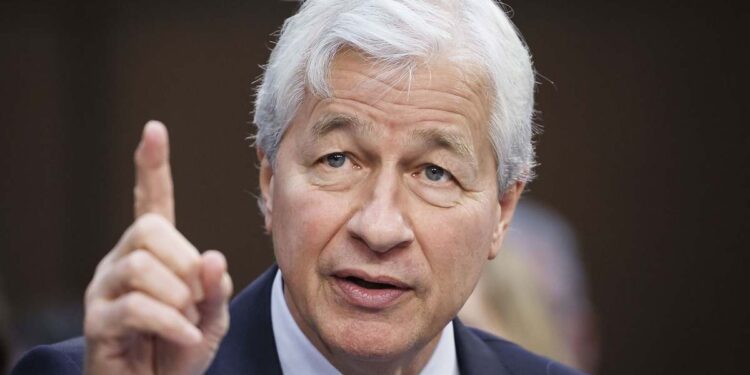Jamie Dimon, CEO and Chairman of JP Morgan, is not too concerned about the ongoing debate that captures the daily attention of economists, analysts, and investors: the direction of inflation in the coming months and the next move by the Federal Reserve (Fed). While the market obsesses and tries to anticipate, what worries the banker is that the current inflationary chapter is likely to be the norm in the future. In his outlook for the coming years, he sees a scenario where interest rates could rise above 8%, as the factors driving prices higher are expected to persist.
The executive has shared his economic forecasts in the annual letter addressed to the entity’s shareholders, published this Monday, and is not very optimistic when it comes to price stability or geopolitics. Dimon is not losing sleep over the current level of inflation, nor the upcoming rate decisions. He believes that “the die is already cast” and predicts high financing costs, with little chance that this fate can be remedied.
“Right now, too much focus is on monthly inflation data and small interest rate movements. However, the die may already be cast, and the price of money one or two years down the line may already be predetermined by several factors,” he points out. He believes that fiscal spending, global rearmament, reorganization of global trade, capital needs, transition to a green economy, or higher energy costs will determine the Consumer Price Index (CPI).
“Many key economic indicators remain strong today and will possibly continue to improve. However, when we look to tomorrow, we must weigh the conditions that will affect the future. It seems that there are a large number of persistent inflationary pressures,” he states. “The small interest rate movements today will have less impact on future inflation than people believe,” he adds.
Dimon focuses on the “forces” driving the economy in the long run, such as the fiscal deficit or government budget, and believes that the impact of all this still has to fully translate into day-to-day. For example, he considers it too early to see the consequences of public spending much higher than revenues or an unprecedented quantitative easing (QE) expansion, as these stimuli had never been carried out on such a scale and without a background of recession.
The same goes for geopolitics, whose repercussions can be more harmful in the long term, even if current consequences are limited. In the executive’s words: “We may be entering one of the most treacherous geopolitical eras since World War II.” Although it’s always difficult to anticipate how such events will alter the world order, JP Morgan, the largest bank in the United States, must prepare its business for various scenarios.
The bank includes in its forecasts interest rates ranging between 2 and 8% or exceeding this range. Even in very different economic scenarios, Dimon believes that financing costs will be high in all cases. If there is economic growth and moderate inflation, the federal funds rate will have to be high due to increased capital needs. If there is stagflation, then greater monetary tightening will be needed to lower inflation.
The banker notes that a simple 2% increase in the reference interest rate leads to a 20% asset value adjustment, a rule that applies to most assets and would have detrimental economic consequences. In the face of such a constraint scenario, the adaptation capacity of companies is also raised, as they have been accustomed to monetary stimuli. In any case, he says the bank he leads would continue to operate properly even in the worst-case scenario, that of stagflation.
Although the federal funds rate is currently at 5.25-5.5%, long-term inflationary pressures and geopolitical tumult could push this rate above 8%, despite prices currently being largely under control, according to the executive.
Dimon’s negative outlook comes at a time of general pessimism about interest rate movements. After the latest Federal Reserve hike, the market assumed there would be several cuts this year. Although up to 150 basis points of easing or six 25 basis points drops were discounted, it is now being considered that this move will be limited to two cuts (50 basis points in total). In other words, the market now also sees an environment of high financing costs, although it does not currently anticipate a bullish trend like JP Morgan’s president.


